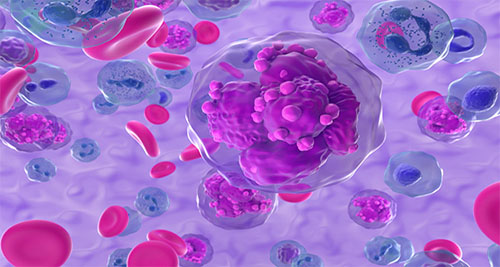Stem Cell Therapy Turkey Cost, Procedure and Details

- What is Stem Cell?
- What is Stem Cell Therapy?
- Which Diseases Is Stem Cell Therapy Used For?
- Types of Stem Cell Therapy
- How Is Stem Cell Therapy Done?
- What are the risks of stem cell therapy?
What is Stem Cell?
Stem cells are cells that can turn into different cell types in the body. They exist in many tissues as a kind of reservoir that the body can use as needed when dead or injured cells need to be replaced. Stem cells create an environment that supports healing with the body's own mechanisms in the injured or diseased area. When treating with stem cells, these natural repair mechanisms of stem cells are used. The application potential of stem cells is practically unlimited due to their ability to transform into different body cells.
What is Stem Cell Therapy?
Stem cell therapy is a form of treatment that uses the body's own stem cells or stem cells from a donor. In most cases, the cells used in the treatment are blood-forming stem cells taken from the bone marrow (bone marrow transplant). Stem cells are predominantly found in the bone marrow, but are also found in the blood, brain, liver, adipose tissue and muscles.
A distinction is made between embryonic and adult cells. Embryonic cells exist in an embryo while adult cells exist in the human organism for life. Stem cells have extraordinary properties. They can regenerate, divide, and turn into other cell types (for example, red and white blood cells and platelets).
In stem cell therapy, previously isolated and preserved stem cells are introduced into the recipient's bloodstream via the vein. Stem cell therapy has been used successfully for decades in the treatment of blood cancer (leukemia) and burns. The efficacy of stem cell therapy in the treatment of other diseases is intensively researched and tested in clinical trials.
Which Diseases Is Stem Cell Therapy Used For?
Stem cell therapy is most commonly used for the treatment of blood diseases and cancers where the bone marrow has been damaged by chemotherapy. After high-dose chemotherapy, the white blood cells (leukocytes) responsible for the immune system are destroyed. The hematopoietic system and immune system can be rebuilt by introducing stem cells into the bloodstream. Typical diseases that should be treated with high-dose chemotherapy are acute and chronic leukemia, lymph node cancer and multiple myeloma (a malignant disease of the bone marrow).
Stem cell therapy is also used successfully for severe burns. Here, skin tissue is grown from your own stem cells, which are applied to the burned areas of the skin. A new procedure is the repair of corneal damage to the eye caused, for example, by chemical burns. Stem cells are transplanted into the eye to rejuvenate the patient's cornea. The effect of stem cell therapy is currently being investigated for the following diseases:
- Cardiovascular diseases
- Parkinson's and other neurological diseases
- Paraplegia
- Paralysis
- Diabetes
- Macular degeneration
- Multiple sclerosis
- Liver damage
- Leukemia
Stem cells are used in the treatment of joint diseases such as arthritis, osteoarthritis, tendon and ligament injuries and cartilage injuries, as well as pain relief or supportive therapy for painful hip dysplasia, post-cruciate ligament surgery or post-fracture treatment.
For diseases such as arthritis, osteoarthritis, tendon and ligament injuries or cartilage injuries, only lifelong pain-relieving treatments were previously possible. Stem cell therapy is a global innovation that can cure diseases or relieve pain or even complete pain relief. Stem cell therapy has no side effects as the body's natural healing processes are supported. The course of treatment is simple and there is minimal stress for the patient.
Types of Stem Cell Therapy
There are two main forms of stem cell therapy: autologous and allogeneic transplantation. In autologous stem cell transplantation, the patient's own stem cells are taken, processed and placed back in the patient. In allogeneic stem cell transplantation, stem cells are transferred between two people, that is, between the donor and the recipient. Which of the two methods will be used depends on the clinical picture of the patient. Not every donor is suitable for allogeneic transplantation. Certain cell surface properties must match the receptor. A disadvantage here is that rejection reactions can occur more frequently.

How Is Stem Cell Therapy Done?
Stem cell therapy is a treatment that will require you to stay in the hospital. The first step in stem cell therapy is the removal of stem cells from the bone marrow, blood or umbilical cord. Stem cells are obtained from the bone marrow by puncturing the pelvic bone. Bone marrow is sucked with a hollow needle. Bone marrow transplant is painful and complex and is rarely used today.
A more common procedure is the removal of stem cells from the blood. Here, stem cells are first stimulated by growth factors to migrate from the bone marrow into the bloodstream. The donor's blood is given to a machine that filters stem cells from the blood through an infusion needle. The remaining blood is returned to the donor with a second needle.
The third option for stem cell collection is cord blood. Stem cells from umbilical cord blood are removed soon after a child is born. Stem cells are preserved after they are obtained. Stem cells are frozen and stored at -196 degrees Celsius using liquid nitrogen. After freezing, the stem cells can be transplanted into a recipient.
Autologous stem cell therapy includes chemotherapy before transplantation to reduce cancer cells. Treatment with high-dose chemotherapy or radiation takes between two and ten days. In stem cell therapy, the transplant itself takes only one to two hours. Healthy blood stem cells are injected into the recipient's vein. After about two weeks, new blood cells are formed from the stem cells.
If successful blood formation has begun, the patient can leave the hospital after three to four weeks. Allogeneic stem cell therapy works the same as autologous therapy. However, as an additional precaution, drugs to suppress the immune system are given before the transplant to reduce or prevent rejection reactions of foreign stem cells.

What are the risks of stem cell therapy?
A stem cell therapy, of course, has been associated with some risks and side effects. Currently, this stem cell therapy is used mainly for cancer in combination with high-dose chemotherapy. therapy. Chemotherapy usually has several known side effects, such as:
- Nausea
- Vomiting
- Inflammation of the mucous membrane
- Hair loss
- Damage to organs (heart, lungs, liver, kidneys)
- Infections caused by weakened immune system
Stem cell transplant itself carries risks. These are mainly:
- Acute allergic reactions
- Life-threatening infections with viruses, bacteria or fungi at the stage between transplantation and new blood formation
- Rejection reactions of foreign stem cells
- Rare: The transplanted blood stem cells do not fully retain
The level of rejection reactions can range from mild to life-threatening. A special situation that can occur after rejection is called Graft-versus -Host-Disease (GvHD). In this case, the recipient rejects the transplanted cells. The level of GvHD can range from mild to severe and occurs mainly after external donations. In this situation, doctors use drugs to suppress the immune system, both to prevent and treat rejection reactions.

